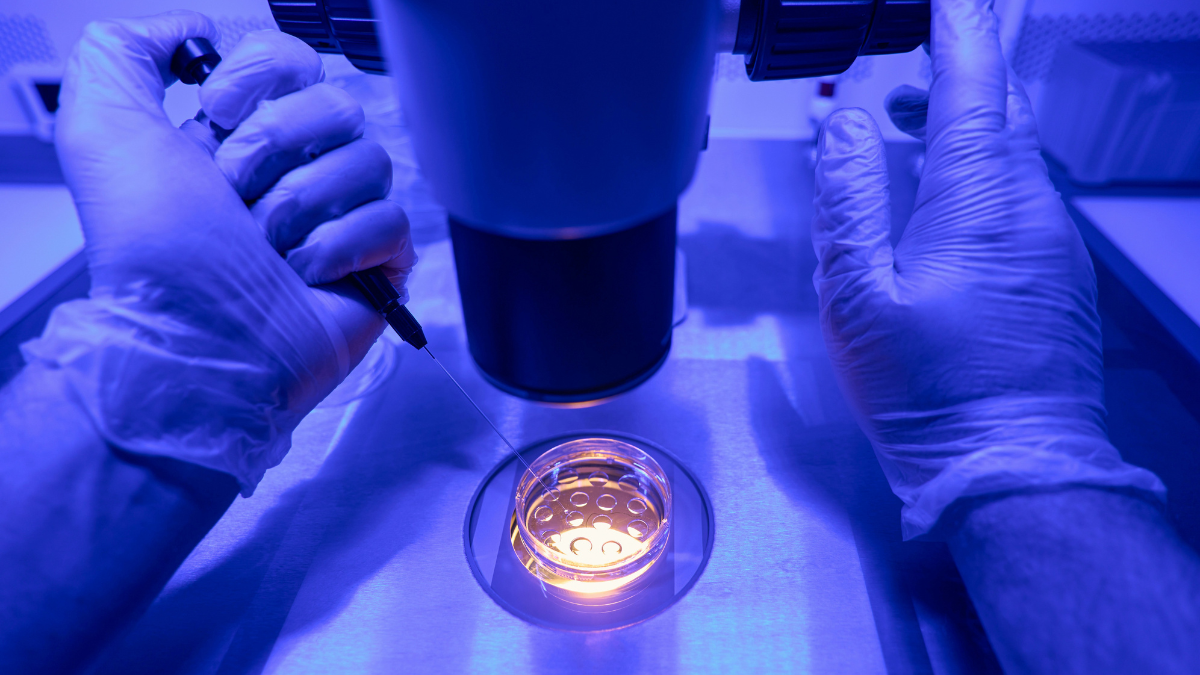

Alabama Supreme Court, Embryos, and the Confusing Ethics of IVF
Some moral clarity for an industry that has been an ethical Wild West.
02/28/24
John Stonestreet Heather Peterson

A decision by the Supreme Court of Alabama, that the state’s Wrongful Death of a Minor Act applies to “all unborn children, regardless of their location” including “extrauterine” embryos stored in a “cryogenic nursery,” has resulted in at least three fertility clinics suspending in vitro fertilization (IVF) services. In an interview on The Daily podcast, New York Times reporter Azeen Ghorayshi claimed that the decision “puts all fertility care in Alabama in limbo.”
It sets a huge and quite scary precedent for anyone who is undergoing IVF, anyone who works in the fertility industry in Alabama who is working with these embryos that are suddenly considered children.
That panic, which has been typical of the media coverage about the decision, makes sense given that the court finally addressed the central question of IVF, a question that the IVF industry has largely depended upon not being answered in order to grow and expand. Specifically, the court’s decision has only put a certain kind of fertility care “in limbo”: fertility care that involves the creating, storing, preserving, and destroying of human embryos. Asking the question “what are they?” was long overdue, given that approximately 1.5 million embryos left over from IVF services are currently stored in freezers in the United States, the vast majority of which are destined for either destruction or donation for medical testing,
Even if late in coming, pro-lifers have been right to celebrate this small bit of ethical clarity for an industry with little of it. During IVF, eggs are fertilized with sperm in a lab. Often, multiple embryos are created and tested for viability before being transferred into the uterus of the mother or a surrogate. This is done in rounds of one to five embryos at a time. If a pregnancy occurs, the remaining embryos are frozen.
Pro-lifers are right to celebrate the court’s recognition of the humanity of these embryos and its imposition on an industry that until now has been an ethical Wild West. At the same time, the decision fails to answer another question. If an embryo must be considered a child if destroyed by accident, what about when it is created, stored in a freezer, and destroyed intentionally? The three couples involved in the Alabama case wished to hold the clinic responsible for the loss of their embryonic children, but as the Court’s opinion plainly states,
[T]he Fondes elected in their contract [with the Center] to automatically “destroy” any embryos that had remained frozen longer than five years; the LePages chose to donate similar embryos to medical researchers whose projects would “result in the destruction of the embryos”; and the Aysennes agreed to allow any “abnormal embryos” created through IVF to be experimented on for “research” purposes and then “discarded.”
Their ruling creates (or reveals?) a legal contradiction similar to that which exists in states with both abortion “rights” and double homicide laws. If a pregnant woman and her preborn baby are killed, the perpetrator can be charged with two counts of homicide. Yet, if that same woman escaped an assault and drove to an abortion clinic the same day, there would be no charge of homicide, legally speaking.
In the Alabama case, the court established that the moral nature of an embryo gives it the same legal protections as a born human under the state’s “wrongful death” statute. Why, then, should the same embryos not be afforded protection from imprisonment, trafficking, experimentation, and eventual destruction?
Strictly speaking, IVF can be done in a way that does not lead to the creation of “excess” embryos. In a 2018 interview, former president of the Christian Medical and Dental Association Dr. David Stevens argued that the ethical way to perform IVF is either by fertilizing and implanting one embryo at a time or by the couple agreeing to implant every embryo created. However, given the costs of each IVF cycle and the almost 50% failure rate, most couples and clinics choose the more “efficient” process. As a result, the number of “excess” embryos suspended in time and development tops a million.
Some of these embryos may be implanted, but most will not. A small number will be donated to other couples for adoption, an especially redemptive alternative that offers embryos a chance at life. The vast majority are treated as property and not children.
So, while this decision can be rightly seen as an incremental step toward the protection of preborn lives created via IVF, the embryos in this case were already being treated in precisely the way the plaintiffs accused others. Eventually, this legal inconsistency must be rectified. The best outcome is if this decision is a first step in reigning in the IVF process, so that one day “extrauterine” children will no longer be treated as commodities.
This Breakpoint was co-authored by Dr. Heather Peterson. For more resources to live like a Christian in this cultural moment, go to breakpoint.org.
Have a Follow-up Question?
Related Content

© Copyright 2020, All Rights Reserved.














